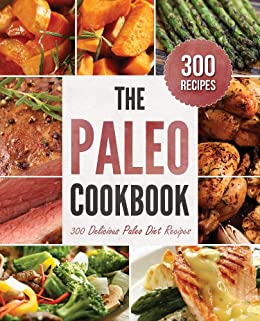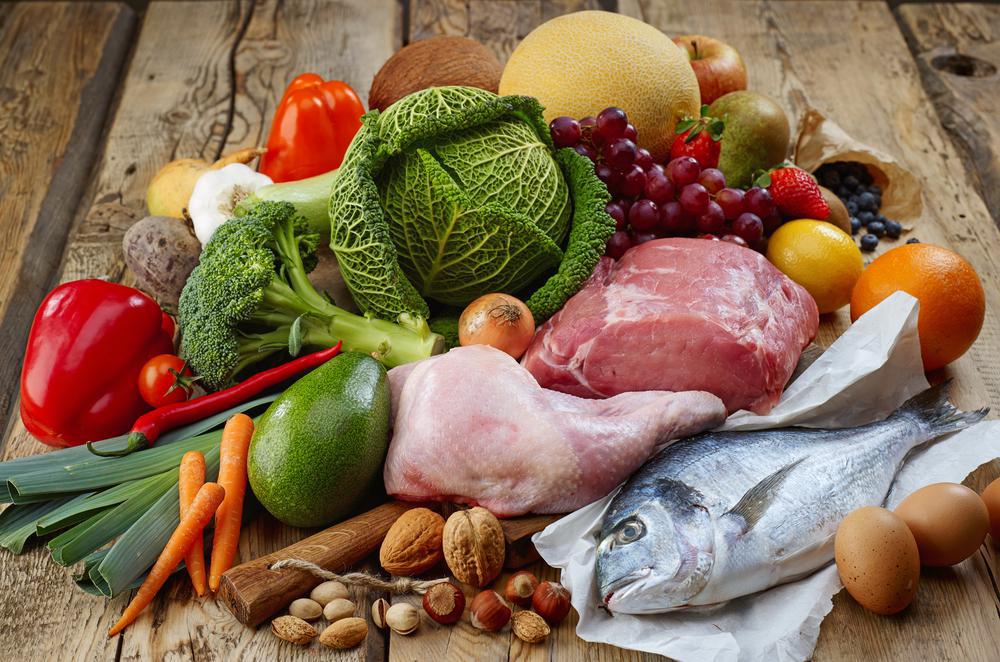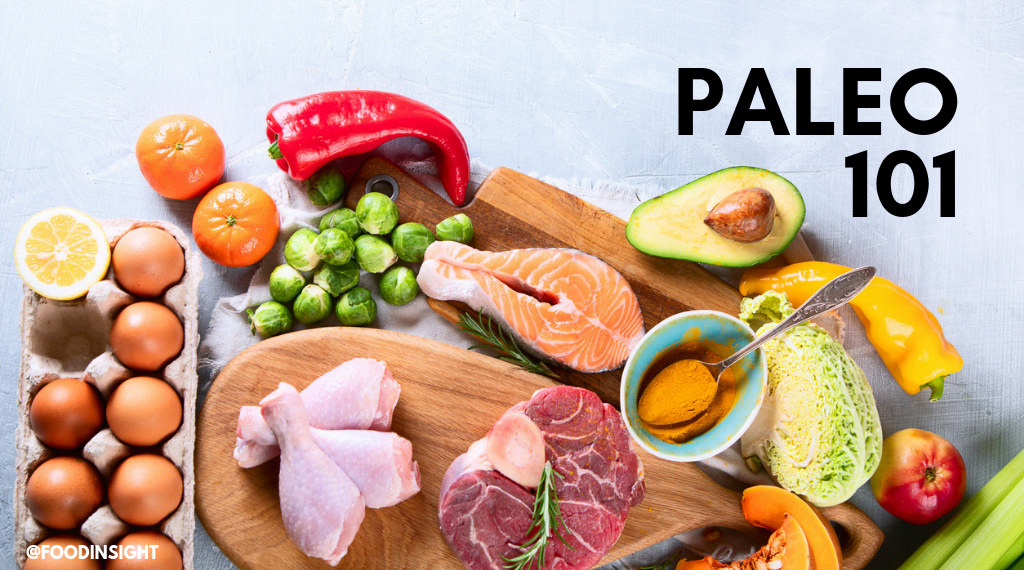
You're likely asking "Who invented Paleo?" Well, the answer is Dr. Loren Cordain, an American scientist who specializes in exercise physiology and nutrition. He is also a leading advocate of Paleo. But which one should you believe? Or is this just another legend? This fascinating diet is revealed in this article.
Dr. Loren Cordain
Paleo, a controversial lifestyle plan, encourages you to eat foods your hunter-gatherer forefathers ate millions of year ago. This diet is based in part on research into Stone Age food, which was high in potassium and low in salt. High salt intake is associated with many modern diseases. Dr. Cordain claims that eating like our Caveman ancestors can prevent many illnesses.
In the world of nutrition and human evolution, Dr. Cordain has published numerous scientific articles and has become one of the most well-known authorities on the subject. His research has been featured on several major media outlets, including Dateline NBC and the front page of The New York Times. He is the author of three books on the topic and a newsletter. Check out these resources for more information on the Paleo diet.
The Paleo Diet can be divided into three levels: basic to intermediate and advanced. The lowest level allows you to eat fewer open meals and more forbidden foods. You can eat legumes and other seeds but only in moderation. A week can include 20 meals and 20 snack options. If you want to live long, healthy lives, the diet is recommended.

The diet is based around the idea that hunter gatherers have high protein intakes. However, Cordain cites research to support his theory by using an ethnographic atlas of 229 hunter-gatherer societies. His research showed that 73% of the people he studied got more than 50% of their energy through animal foods, while only 14% ate plants. Cordain's findings were refuted by Katherine Milton in Am. J. Clin. Nutr. 71:665-667.
Although this hypothesis seems to be sound, Dr. Cordain has strong counterarguments. Cordain suggests that a diet low carbohydrate and fat can increase one's chance of developing cancer. However the evidence disproves this assertion. The diet's benefits outweigh its drawbacks, for example. Cordain's research also highlights its limitations, but is not conclusive.
Walter Voegtlin
Paleolithic food is a way of eating which has been around at least 35 years. Walter Voegtlin is the gastroenterologist that developed The Stone Age Diet. This diet was developed following extensive research into man's eating habits and ecology. He found that the diet was helpful for people with common digestive problems. There are many health benefits to the diet, including improved brain function as well as a lower chance of developing colon cancer.
Voegtlin founded the diet on the belief that humans evolved into carnivores. Therefore, we should follow the same path. Voegtlin believed that humans are genetically identical to sheep and dogs and should therefore eat carnivorous food. Advocates of the diet point to current data which is mixed, but generally favorable. They should also remember that humans today have not changed as much as the animals did ten thousands of years ago to the paleo diet.
Walter Voegtlin uses chemistry to demonstrate the effectiveness of his "The Real Diet of Man" book. The book highlights foods with low glycemic and high fiber levels, as well as balanced essential fatty acid. It focuses on the foods that allow the body to function at its best. The authors, Ted Slanker and Walter Voegtlin, have been reporting on the fundamentals of nutrition research for over fifteen years. They also distill complex studies into basic nutrients for human well-being.

Paleo includes certain food groups that are not allowed on the diet. These include processed foods and sugary drinks. Due to their grain-fed diets, certain animals are not suitable. Furthermore, modern fruits and veggies are different than those consumed during paleolithic time. Paleo advocates point out that studies have been done on a very small number of subjects, and they are not lasting. Those studies cannot support the Paleo diet as a whole.
It is imperative to study animal diets as the Paleolithic food system is based upon animal protein. While Paleolithic diets did not include vegetarian foods, they still have an influence on modern people. Many of these researchers believe that animals' diets were not entirely vegetarian or vegan. While eating more meat and fat can lower cholesterol, it can also improve cardiovascular disease prevention.
FAQ
Where can I buy good quality kitchen equipment?
You can purchase high-quality kitchen equipment online. There are many websites where you can shop for all kitchen tools. Before you purchase any kitchen equipment, ensure that you have read all reviews and rated it before buying. Ask other owners if they have any recommendations.
How can I be motivated to cook?
Sharing meals with family and friends is the best part of cooking. It is easier to cook for yourself than for others. You can be inspired to cook if you try something new. This will help you learn about new techniques and ingredients. You can also use recipes from other cultures to increase your culinary knowledge.
How long does learning to cook take? What time do you need to learn how to cook?
It all depends on your skill level. Some people can pick up basic cooking techniques within a day or two. Others may take months or years to master the basics of cooking.
The amount of time needed to learn to cook varies considerably based on the person. One example is that someone who has never tried cooking before would likely take more time to learn than someone who cooks often. Certain types of cooking require more skill than others. Baking, for instance, requires more skill than frying.
You should learn a particular technique to improve your cooking speed. After mastering one technique, you can move on to the next. Don't worry too much about the exact number of days or weeks it takes to learn to cook. Keep practicing and enjoying the process.
What should a beginner chef learn?
Beginners should begin cooking simple dishes like soup, pasta, and rice. If you want to learn how to cook, go for a recipe book or YouTube video. Cooking with friends is much more enjoyable. Have a group of friends cook, or cook together.
How much does it cost for you to learn culinary arts?
The price of studying culinary arts varies widely. For example, a four-year degree typically costs around $40,000. A two year associate's degree might cost less than $5,000. Tuition costs vary depending on which program you choose. Private institutions charge higher prices than public ones.
Is it possible to be self-taught?
Yes, you can self-teach cooking! The joy of cooking is something that everybody enjoys doing, no matter their skill level. You can learn to cook by starting at home. Start small, such as making pancakes for breakfast and spaghetti sauce at dinner. Experimenting with new recipes is the best way to learn to cook. You may even want to make a few mistakes along the way.
The time it takes to learn to cook can vary from just a few hours up to several weeks, depending upon your skill level. It is important to remember that cooking doesn't have to be about following recipes. There are many ways to cook food. If you have an idea, follow it.
Can I cook with my family?
Yes! Kids love to help in the kitchen. It's an enjoyable activity that teaches responsibility and teamwork. The whole process can be done by children, including washing and chopping vegetables. If your children follow safe practices when handling knives, they will enjoy helping you cook.
Statistics
- According to the BLS, chefs earn $58,740 a year. (learnhowtobecome.org)
- On average, chefs earn $58,740 a year, according to the BLS. - learnhowtobecome.org
- The median pay for a chef or head cook is $53,380 per year or $25.66/hour, according to the U.S. Bureau of Labor Statistics (BLS). (learnhowtobecome.org)
External Links
How To
How to make a perfect omelet
Omelets have always been a favourite food to eat for breakfast. But how do they turn out so perfectly? I've tried many different methods and recipes, but none of them seem to work! Today, I'd like to share some tips with you in order to make delicious and fluffy omelets every day.
It is important to know that eggs can be temperamental when making omelets. It is important that eggs are fresh from an organic market and kept cool until used. If they are not kept cold enough, the whites won’t form properly. The yolks will also break down too quickly and become runny. This can make your omelets look bizarrely colored. If you plan to cook the eggs right away, it is best to use room temperature eggs.
Another tip is to separate each egg before adding them to the saucepan. You don't want the white to get mixed with the yolk, as this could cause the egg to curdle.
If you add the egg directly onto the stovetop, you might end up burning the bottom part of the egg, which would ruin the texture of your omelet. Instead, place the egg in the microwave for 10 second before you put it in the skillet. The microwave heat is sufficient to cook the egg without overcooking.
Let's now talk about mixing eggs. Mix eggs well together. You can do this by turning the bowl of your mixer upside down. Now shake the bowl vigorously. This way, the air inside the bowl gets whipped around and mixes the egg thoroughly.
The fun part is now - adding the milk to the mixture. The first step is to pour half of the milk in the beaten eggs. Next, fold the eggs into the remaining milk. Don't worry if there are still streaks of egg visible; these streaks will disappear once you flip the omelet.
After folding the eggs fold the pan onto medium heat. When the oil starts to hot, wait for the pan to cook. Once the oil starts getting hot, add 1/4 cup of butter to the pan and swirl it around to coat the entire surface of the pan. Next, carefully open the lid and sprinkle salt into your pan. A pinch of salt will help prevent the omelet from sticking to the pan.
Cover the pan once you have formed the omelet. Wait for the top to set. Flip the omelet over using a spatula or flip the pan upside down. Cook the opposite side for another minute. Serve immediately after removing the omelet from its pan.
This recipe works best when you use whole milk.